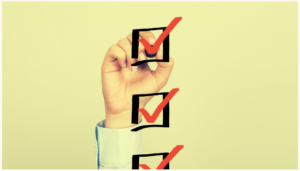How Product Matching Improves Competitor Analysis and Boosts Sales
Reading Time: 9 Minutes
2.14 billion people shop online and spend $1.03 trillion every year.
Retailers recognize the strategic significance of this group. And that online shoppers are savvy.
Shoppers have options when it comes to where they shop and how much they spend. Most online shoppers compare products and prices across retailers to discover the best deal or the quickest delivery route.
Because of that, retailers have to be as sharp as the consumers. In the spirit of great deals and convenient pickup options, you compare your entire product catalog to the market to see pricing opportunities, assortment gaps, promotional events, and availability issues. This comparison process, product matching, gives your category managers an all-inclusive view of categories, products, and competitors. Understanding your competitive landscape means will help you stand out to shoppers.
Accurate product matching = true insights that to increase sales.
Machine Learning’s Role
Product matching is a fundamental to a true competitive intelligence program.
It starts by capturing a breadth of data across your competitive set. Not limited to: prices, features, shipping, product codes, promotions, descriptions, and similar products. (And not just data from the web – you should also see in store data and flyer data). Then, products should be accurately matched across all sources to stitch the most accurate, up-to-date picture of the market.
Sure, you could match products manually, but it would be time consuming and error prone.
Machine learning greatly improves product matching. The point of machine learning is that the process improves by itself over time. As more data is collected, the machine forms more accurate insights, providing retailers with vital information to influence decisions that drive profit. Trailblazing retailers use ML-driven technology to perform the monotonous task.
Rajat Nigam, CEO and founder of Bungee Tech, explains how machine learning “will have a very high impact in each area of retail operations.” He says to “think of AI as the broader discipline of making autonomous systems which can think and perform operations like human beings.” A subset of AI is machine learning, which focuses on creating models that can perform tasks and make predications by learning from existing data. Nigam continues, “There’s been an evolution from supervised learning models to unsupervised to what we now call deep learning models. They’re built to handle more complex patterns and consume a very large amount of unlabeled data.”
3 Benefits of Matching Retail Catalogs
Assortment
- Product matching means you can see exactly what your competitors are selling.
- Do you know how many products overlap between you and your biggest competitor(s)?
- When you have assortment data, you can create an exclusive assortment for your customers.
Pricing
- Product matching means you have better pricing intelligence.
- Are you tracking KVIs over time to understand your price position compared to others in the market?
- When you have this data, you can monitor your competitors’ price strategies and build customer loyalty by creating valuable offers.
Category Management
- Product matching means your category managers have a simple way to monitor the products, prices, trends, and competitors.
- Can your category managers easily drill down to their product list to determine if price changes need to occur?
- When you have accurate product matching, your team can align on decisions and improve retail strategies across the business.
Product Matching Challenges
It all sounds so great, but if you’re struggling to match products across competitive catalogs, you’re not alone. Product matching continues to be a challenge for most retailers. Here’s why:
+ Poor catalog quality (missing titles, wrong UPCs)
+ Category and brand variations (retailers treat categories and brands differently)
+ Beyond exact matches (need visibility into variations, similar, and unrelated products)
Competitive Insights
Done right, product matching is a competitive advantage. It helps retailers optimize their pricing and assortment strategies to increase conversions and reduce inventory write-offs. Accurate product matching leads to defined competitive analysis which creates your strategy to drive growth.
Product matching creates competitive intelligence that gives retailers insights on product price changes, promotional strategies, assortment differences and overlap, and other market dynamics.
The point of competitive intelligence isn’t to learn about one competitor or compare one product. Instead, it illustrates the overall landscape.
A reliable, real-time, comprehensive competitive intelligence program allows retailers to assess their competitive position.
Retail Growth
So, what’s the best way to analyze pricing and assortment across your competition? How can you drive growth through data? The answer starts with product matching.
It’s the secret input to a complete and strategic catalog. Make informed decisions about your price strategy, new product releases, and promotional calendars. No need to copy and paste the same plans from last year. Let your data give you get a fresh perspective. Use your insights to build loyalty, increase conversions, and stay competitive in the market.
The Latest Insights – Straight to Your Inbox
Sign up for the Bungee Tech mailing list for actionable strategies, upcoming events, industry trends, and company news.













